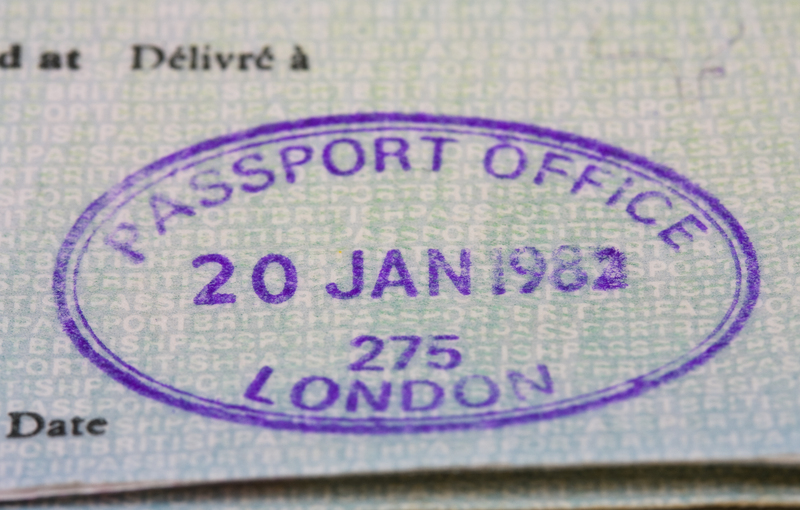Unlock the Secrets to Organized Packing for Moving House
Posted on 19/06/2025
Unlock the Secrets to Organized Packing for Moving House
Relocating your home can be both an exciting and overwhelming experience. Whether you're moving across town or to a whole new city, the process of packing for moving house often feels like an enormous task. But what if you could transform this daunting chore into a smooth, organized journey?
Unlocking the secrets to organized packing for moving house is all about smart strategies, careful planning, and the right resources. In this comprehensive guide, we'll share practical tips, creative solutions, and insider advice to ensure your move is as stress-free and efficient as possible. Get ready to pack like a pro!
Why Organized Packing Matters When You're Moving House
Effective packing isn't just about getting your belongings from one place to another. It's the foundation for a successful move that saves you time, protects your valuables, and reduces your overall stress.
- Efficiency: Organized packing means less chaos and fewer last-minute headaches on moving day.
- Safety: Well-packed boxes are less likely to be damaged, and fragile items remain secure during transit.
- Easy unpacking: With a clear system, settling into your new home becomes much easier and faster.
Common Packing Challenges
- Underestimating the time required
- Running out of supplies
- Losing track of where items are packed
- Overpacking boxes or making them too heavy
- Failing to label boxes accurately
Proper planning and adopting expert packing tips for moving house can help you avoid these pitfalls.

Step-by-Step Guide to Packing for Moving House
1. Start With a Detailed Packing Plan
Begin the process early -- at least 4-6 weeks before your move. Draft a packing timeline that breaks the process into smaller, manageable parts. Some elements you should include:
- Rooms to pack and when
- Inventory checklist
- Supplies required
- Donation and disposal tasks
Pro tip: Update your checklist regularly as you go to ensure you never lose track of your progress!
2. Gather Essential Packing Supplies
High-quality packing materials are crucial for a smooth and organized move. Stock up on the following:
- Sturdy moving boxes in various sizes
- Packing tape and dispensers
- Bubble wrap, foam sheets, or packing paper
- Stretch wrap for furniture
- Markers and labels for each box
- Scissors and box cutters
- Trash bags and cleaning supplies
Don't forget ziplock bags for small parts, screws, and hardware from disassembled furniture. Keep all moving essentials in an accessible spot so you can pack and seal boxes efficiently.
3. Declutter and Downsize Before Packing
One of the best organizational secrets for packing to move is to begin with less stuff!
- Go room by room and sort items into Keep, Donate, Sell, and Discard piles.
- Host a garage sale or sell items online to lighten your load (and potentially offset some moving costs).
- Donate usable goods to charity.
- Throw away anything that's broken, expired, or no longer of use.
The less you have to pack, the easier, cheaper, and more organized your move will be!
4. Pack One Room at a Time
Focusing your energy and supplies on one room prevents items from becoming mixed up and helps you stay organized.
- Start with rooms you use the least (such as guest bedrooms, garages, or storage closets).
- Leave the kitchen, bathrooms, and bedrooms you use daily until last.
5. Categorize and Label Everything
As you pack, group similar items together and label each box clearly on multiple sides. Include:
- Room destination (e.g., Kitchen, Master Bedroom)
- Brief description of contents (dishes, linens, books)
- A unique box number to help with inventory tracking
- Special instructions if needed (Fragile, This Side Up, etc.)
Tip: Use color-coded labels or tape for each room--this makes unloading and directing movers simple and efficient.
6. Use Inventory Sheets or Moving Apps
Maintain a detailed inventory list. This is a game-changer for organized packing when moving house. You can create a spreadsheet, print inventory sheets, or use moving checklist apps to keep track of:
- Box numbers and their corresponding contents
- Which rooms items are destined for
- High-value or essential items to keep an eye on
This strategy not only helps during unpacking but is also invaluable for insurance claims if something is lost or damaged.
Packing Techniques to Protect Your Belongings
Use the Right Box Size
- Pack heavy items (books, tools) in small boxes so they're easier to lift.
- Use large boxes for lightweight items (pillows, linens, clothing).
- Never overpack a box. The box should close easily without bulging or splitting.
Proper box selection keeps everything safer and helps maintain your organizational system.
Cushion Fragile Items
- Wrap glassware, ceramics, and delicate items individually in bubble wrap or packing paper.
- Use extra padding on the bottom and sides of boxes holding breakables.
- Fill gaps with towels, clothing, or packing peanuts to prevent movement.
Mark these boxes as FRAGILE and stack them carefully during loading.
Pack Clothes and Linens Smartly
- Keep clothes on hangers and use wardrobe boxes, or place a garbage bag over a group of hangers for quick transferring.
- Roll clothing to save space and minimize wrinkles.
- Use suitcases for transporting heavier clothes, shoes, or books.
Disassemble Furniture When Possible
- Take apart beds, desks, and shelves to save space and reduce weight.
- Keep screws and hardware in labeled ziplock bags fastened to the furniture pieces.
- Wrap parts in blankets or bubble wrap.
Tip: Take pictures before disassembly so reassembly in your new home is a breeze!
Tips for Organized Packing of Specific Rooms
Packing the Kitchen
- Sort out expired or unwanted pantry items first.
- Pack rarely used gadgets and dishware early.
- Use dividers and lots of padding for glasses, plates, and fragile kitchenware.
- Keep daily essentials aside for your final days and pack them in an "open first" box.
Bedding and Bedrooms
- Pack off-season clothing and extra linens first.
- Label bedding sets for each room to simplify unpacking.
- Consider vacuum bags for extra pillows and blankets to save space.
Living Room and Electronics
- Take photos of cords and electronics before unplugging.
- Pack electronics in their original boxes if possible, with padding.
- Protect TVs and monitors with specialized boxes or bubble wrap sheets.
- Pack books flat in small boxes to prevent warping.
Bathroom Essentials
- Close tightly and wrap liquids in resealable bags to prevent spills.
- Dispose of expired medications and cosmetics.
- Pack towels and bath mats together, and keep a small kit for immediate use upon arrival.
Handling Last-Minute Packing and Moving Day
Prepare an "Essentials Box"
Include items you'll need right away so you're not searching through boxes your first night:
- Toiletries
- Change of clothes
- Medications
- Screens, chargers, and basic tools
- Snacks and bottled water
- Important documents and valuables
Label this box as "Open First." Keep it with you, not in the moving truck.
Take Care of Perishables and Pets
- Eat up perishable food or give it away ahead of time.
- Pack pet supplies separately, and have a plan for safely moving your pets.
Do a Final Walk-Through
- Check closets, cupboards, attics, garages, and crawlspaces.
- Leave keys, manuals, and remotes for the new owner, if required.
Unpacking: The Final Step of Organized Moving
Organized Unpacking Makes Life Easier!
With your organized packing system for moving house, moving in will feel manageable. Start by:
- Placing boxes in their designated rooms as per your labeling system
- Setting up beds and bathrooms first for instant comfort
- Unpacking your kitchen essentials for meals and hydration
- Working through the rest of your checklist as time allows
By staying organized during the packing phase, you'll experience a stress-free transition into your new living space.

Expert Packing Tips for a Stress-Free Move
- Start early! Give yourself more time than you think you need to avoid a frantic rush at the end.
- Set daily goals: Even packing 2-3 boxes a day adds up quickly.
- Enlist help: Involve family, friends, or hire professional packers for large moves.
- Stay flexible: Unexpected changes can pop up -- build buffer days into your plan.
Remember, the key to organized packing for moving house is preparation, labeling, and systematic sorting. With these tips and secrets, you'll be able to enjoy the fresh start your new home represents rather than getting bogged down by moving day nightmares!
Conclusion: Moving House Doesn't Have to Be Chaotic
Packing for a move can seem intimidating, but with the right organization strategies, you can turn a dreaded task into a manageable project. Declutter, plan, label, and protect your belongings -- these are the true secrets to an organized house move.
By following our comprehensive packing guide, you'll avoid common mistakes and ensure that both your packing and unpacking experiences go smoothly. Happy packing -- and enjoy making your new house a home!



